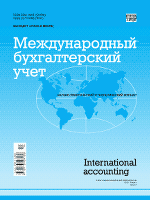Abstracting and IndexingРИНЦReferativny Zhurnal VINITI RAS Worldcat Google Scholar Online availableEastvieweLIBRARY.RU Biblioclub |
A comparative analysis of the preparation of financial results statements in Russia and China
Available online: 18 May 2015 Subject Heading: INTERNATIONAL STANDARDS OF ACCOUNTING AND REPORTING JEL Classification: Pages: 2-12
The economic cooperation between Russia and China continues to gain its momentum. This is illustrated with recent bilateral agreements concluded in 2014; joint projects, which will be subsequently implemented, and economic cooperation of both nations within the framework of BRICS, SCO and other international organizations. The leading economists examine prospects for comprehensive Russian-Chinese cooperation in trade and investment on mutually beneficial and stable principles. Financial statements of leading national companies provide fundamental information on economic activity, financial position and prospects for development. China has been reforming its national system of accounting and financial reporting since the reform and opening up policy was pronounced. The reform is called to ensure the convergence of the national accounting and financial reporting systems with the international standards. Russia embarked on this process much later, being stagnant until recently. In this respect, it is relevant to make a comparative analysis of specific aspects seen in preparing basic accounting forms in Russia and China and the statement of financial results, in particular. It will identify the principal aspects of the accounting and financial reporting methodology and scope in both countries. The comparison will help select the best practices China generated and apply them in Russia. The Chinese model statement of financial position has rather simple structure. It is more balanced in its nature, since even other income and expense are classified by category. As for types of expenses, it is worth mentioning the line of Financial expenses, which is missing in the Russian statements. The availability of the category in the Chinese financial statements evidences that the Chinese entities and manufacturing industries use the developed system of various financial techniques. Keywords: China, Russia, accounting, financial reporting, financial statements, statement of financial position References:
|
ISSN 2311-9381 (Online)
|
|








